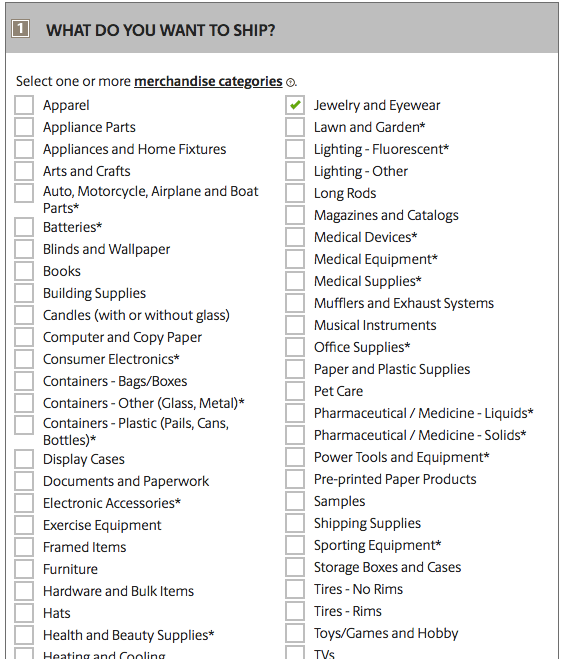When you ship fragile items like wine bottles or jewelry, you want them to arrive in the same shape as they left. Packages are sorted by machines and handled by UPS workers which inevitably leaves some packages battered and bruised in the process. It also leaves one unhappy customer on the other end of that package. Here are a few steps you can take to make sure your fragile goods are properly packed.
Shipping fragile jewelry with UPS
UPS offers a package advisor tool with 15 pre-defined categories listed and then the option to enter your own category. The second field instructs you to input dimensions and weight.

Let’s say you wanted to ship jewelry. UPS then generates guidelines to use when preparing your package to ship.
Small cell bubble sheeting
Small cell bubble sheeting protects the surface of your jewelry and prevents any scuffs from occurring. For lightweight jewelry, it provides a good amount of cushioning. Each item should be wrapped separately and surrounded in several layers to ensure adequate protection. UPS recommends each item should be surrounded by at least two inches of sheeting and placed two inches away from the box walls.
Alternative options include kraft paper or loose fill. Loose fill (packing peanuts) complement the small cell bubble sheeting by filling the gaps in the packages and it normally used with lightweight, non-fragile items.
Remember to separate the products from one another with a minimum of two inches between items and between the items and the wall. It might feel like you are over packing your box, but all the steps are necessary to create a package that will not be crushed, bent or torn during its journey. It’s better to do the extra work in the beginning to avoid chaos down the road.
Brand new box
Make sure to always use a new box when shipping. Old boxes can wear and tear easily. The last thing you want is a package full of jewelry scattered about somewhere instead of in the recipient’s hands. Using a new, single-wall corrugated shipping container to pack your fragile products in will reduce the chance of damage.
Tape and label the package
How you tape the box is just as important as how you pack it. If you skimp on the tape, the weight of the contents could cause the box to open. That’s the last problem a shipper wants. Using a strong tape with a minimum width of two inches, seal the flaps of your shipping container using six strips of pressure-sensitive poly tape to provide security. If the box flaps meet in the center, apply three strips of tape to both the top and bottom of the box, so the middle and two edge seams are sealed shut.
Now it’s time to label your shipment. Avoid placing the label over a seam or box closure or on top of box sealing tape. Verifying that complete addresses are used for both sender and receiver. If you did use an old box, remove any old markings or shipping information to avoid possible confusion.
Share A Refund gives shippers peace of mind
When damage does happen, Share A Refund has you covered. The process of loss and damage shipment repayment is not simple. Share A Refund handles your claims with care. Why waste your time and skills on something that can be handled with an automated service? Share A Refund has all the tools needed to give you peace of mind.


